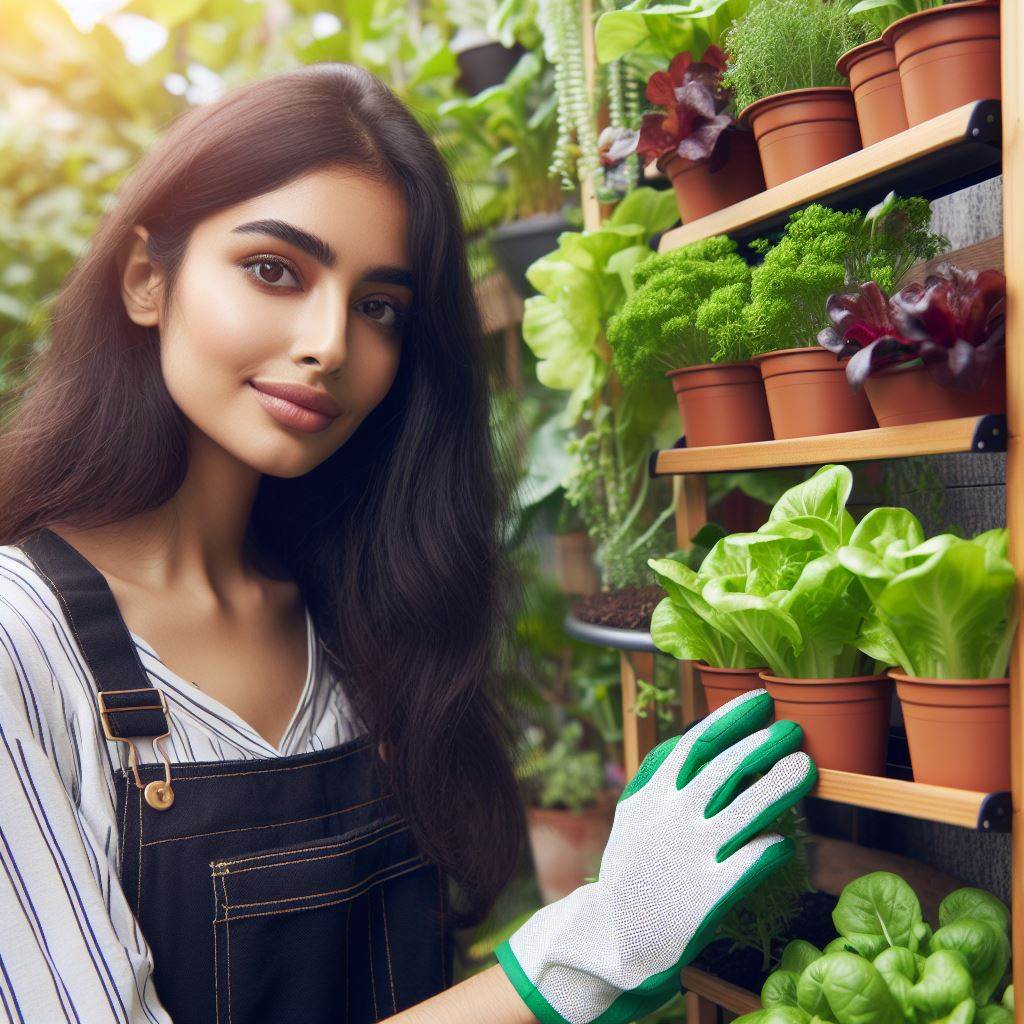Introduction
Composting plays a vital role in waste management and promoting sustainable farming practices.
With increasing global concerns about waste disposal, composting has emerged as a viable solution.
One particular method, known as worm composting, stands out for its ability to transform waste into a valuable resource.
Worm composting, also known as vermicomposting, utilizes special types of worms, such as red wigglers, to convert organic waste into nutrient-rich compost.
These worms consume the organic matter, breaking it down into smaller particles.
As they digest the waste, they produce a substance called castings or worm manure, which is a potent natural fertilizer.
The process of worm composting begins with creating a suitable environment for the worms.
This requires a compost bin or container that provides adequate moisture, ventilation, and food for the worms.
The worms are then introduced to the bin along with organic waste materials such as fruit and vegetable scraps, coffee grounds, and shredded paper.
Over time, the worms digest the waste, breaking it down into nutrient-dense compost.
This compost is incredibly beneficial for plants, as it enhances soil fertility and helps retain moisture.
It also improves the structure of the soil, making it more conducive to plant growth and reducing the need for chemical fertilizers.
In fact, worm composting offers an efficient and environmentally friendly method of waste disposal while simultaneously producing high-quality organic fertilizer.
By harnessing the power of worms, we can turn waste into “gold” by creating nutritious soil amendments that support sustainable agriculture and contribute to a healthier planet.
Benefits of Worm Composting
Worm composting, also known as vermiculture, is an environmentally friendly method to recycle organic waste and turn it into nutrient-rich compost.
The benefits of worm composting are numerous and can have a positive impact on both the environment and gardening practices.
Environmentally friendly
One of the key advantages of worm composting is its contribution to reducing landfill waste.
By diverting food scraps, yard trimmings, and other organic materials from the landfill, worm composting helps to alleviate the burden on waste management systems.
Furthermore, worm composting greatly decreases greenhouse gas emissions.
When organic waste decomposes in a landfill without oxygen, it produces methane, a potent greenhouse gas.
By composting these materials with worms, methane emissions are significantly reduced.
Produces nutrient-rich compost
Worm composting produces a high-quality compost that is beneficial for soil and plant health.
The compost, also known as vermicompost, is rich in essential nutrients needed for plant growth, such as nitrogen, phosphorus, and potassium.
Firstly, the use of vermicompost improves soil quality. It enhances soil structure, making it more crumbly and well-aerated, which encourages root growth and better water retention.
Vermicompost also improves soil fertility by increasing its organic matter content.
Secondly, vermicompost enhances plant growth.
The nutrients present in the compost are readily available to plants, ensuring they receive a balanced diet and thrive.
This leads to healthier, more robust plants with increased resistance to pests and diseases.
Lastly, worm composting reduces the reliance on chemical fertilizers.
The nutrient content in vermicompost eliminates the immediate need for additional synthetic fertilizers, reducing the environmental impact associated with their production and application.
This not only benefits the environment, but also saves money for gardeners.
In short, worm composting offers several benefits, making it a valuable practice for both environmental sustainability and gardening success.
By reducing landfill waste and decreasing greenhouse gas emissions, worm composting contributes to a cleaner and healthier planet.
Additionally, the production of nutrient-rich compost improves soil quality, enhances plant growth, and reduces the need for chemical fertilizers. It truly turns waste into gold.
Read: Garlic Spray: Natural Pest Deterrent
Getting Started with Worm Composting
Worm composting, also known as vermicomposting, is an excellent way to turn organic waste into nutrient-rich compost.
By using a specialized bin and selecting the right worms, you can create your own “worm gold” that will benefit your plants and reduce waste.
Transform Your Agribusiness
Unlock your farm's potential with expert advice tailored to your needs. Get actionable steps that drive real results.
Get StartedSelecting the right worms
To start worm composting, you need to choose the right type of worms.
Two common species suitable for composting are red wigglers (Eisenia fetida) and African nightcrawlers (Eudrilus eugeniae).
These worms are well-suited for the composting process and thrive in organic waste.
Choosing an appropriate bin/container
Selecting the right bin or container is crucial for successful worm composting.
Consider the size and capacity of the bin based on your composting needs.
Ensure that the bin allows proper airflow and has drainage holes to prevent waterlogging.
Setting up the worm habitat
- Bedding materials: Create a comfortable environment for the worms by providing suitable bedding materials. Shredded paper or coconut coir work well as bedding, providing a moist and breathable substrate for the worms.
- Moisture levels and proper ventilation: Maintaining the right moisture levels is crucial for the worms’ well-being. The bedding should be damp but not overly wet. Additionally, proper ventilation is essential to prevent the compost from becoming anaerobic.
- Placing the worms in the bin: Once the habitat is prepared, it’s time to introduce the worms to their new home. Gently place the worms on top of the bedding and allow them to burrow into it naturally. Avoid overcrowding the bin to maintain a healthy worm population.
By following these steps, you can kickstart your worm composting journey.
Remember to avoid using soil in the bin, as it can disrupt the balance and complicate the composting process.
Proper care and maintenance will ensure a thriving worm population and high-quality compost.
Worm composting offers numerous benefits.
Not only does it provide a solution for organic waste, but it also produces a nutrient-rich fertilizer that enhances soil health.
Additionally, worm composting is an eco-friendly practice that reduces landfill waste and promotes sustainability.
As you delve deeper into the world of worm composting, you will discover the remarkable ability of these tiny creatures to transform organic waste into valuable compost.
Your plants will thank you for the nutrient-rich soil, and you’ll enjoy the satisfaction of reducing your environmental footprint.
Worm composting is not only about turning waste into gold; it’s also about cultivating a connection with nature and embracing sustainable practices.
Embrace the power of worms and join the ranks of eco-conscious individuals who are revolutionizing waste management, one compost bin at a time.
Read: Biocontrol: Nature’s Pest Management
Maintaining Worm Composting System
Maintaining a worm composting system requires attention to detail in order to create a healthy environment for the worms to decompose organic waste efficiently and turn it into nutrient-rich compost.
Let’s explore the key aspects of proper maintenance.
Proper feeding
Feeding the worms with suitable food scraps is crucial for their well-being and the success of the composting process.
Vegetable waste, coffee grounds, tea leaves, and fruit peels are excellent choices.
These organic materials are rich in nutrients and easy for worms to break down.
Avoid adding meat, dairy, oily foods, and citrus peels, as they can lead to unpleasant odors and discourage worm activity.
Managing moisture levels
Moisture is essential for the worms’ survival and is necessary to enable them to consume and decompose the organic matter effectively.
Monitoring and adjusting the moisture content is vital.
The bedding material should feel as damp as a wrung-out sponge.
If it is too wet, add dry bedding material like shredded newspaper or cardboard.
On the other hand, if it is too dry, sprinkle some water over the bedding to provide moisture.
Ensuring proper temperature
Worms thrive in a specific temperature range of 55-77°F (13-25°C). It is crucial to maintain this temperature to optimize their composting activity.
Avoid exposing the worms to extreme heat or cold, as they are sensitive creatures.
During hot summer months, it is important to move the worm bin to a shaded area to prevent overheating.
In colder climates, insulating the bin with blankets or placing it in a more insulated location can protect the worms from freezing temperatures.
By following these guidelines, you can create an ideal environment for worms to transform waste into valuable compost.
Remember, a well-maintained worm composting system not only reduces the amount of organic waste sent to landfills but also provides you with nutrient-rich compost for your garden.
Start your worm composting journey today and turn waste into gold!
Read: Aquaponics: Fish Types & Plant Choices

Harvesting and Using Worm Compost
Worm composting, also known as vermicomposting, is a sustainable and effective method of turning organic waste into nutrient-rich compost.
Now that you have successfully maintained your worm bin and witnessed the transformation of waste into valuable compost, it is time to harvest and put it to use.
Signs of ready-to-use compost
Once the composting process is complete, the resulting compost should exhibit specific characteristics.
Firstly, it should have a dark, crumbly texture, indicating that it is fully decomposed.
This texture is crucial as it ensures that the compost is easy to work with and will not compact when applied to plants or gardens.
Additionally, the compost should possess an earthy smell that signifies the organic materials have been effectively broken down.
Methods for harvesting compost
The first step in the harvesting process is to separate the worms from the compost.
One method is to use a sorting tray with multiple layers, where worms will naturally migrate upwards towards a fresh food source.
As the worms move towards the top, you can remove the lower layers, which will contain most of the mature compost.
Another approach is to create a pile and gradually remove the top layer, where a majority of the worms will have migrated to.
Lastly, using a sifting process can further separate any remaining worms or large chunks of organic matter from the finished compost.
Applying worm compost to plants and gardens
Now that you have harvested your worm compost, it’s time to utilize its benefits in your plants and gardens.
By mixing the compost into the soil, you improve its fertility and structure, providing essential nutrients and enhancing plant growth.
This technique is particularly beneficial for outdoor gardening projects and can be used for both flower beds and vegetable gardens.
Alternatively, you can top-dress plants with a thin layer of compost, which acts as a slow-release source of nutrients.
Finally, worm compost can be transformed into nutrient-rich compost tea by steeping it in water.
This liquid fertilizer can be applied directly to plants, providing them with a readily available source of organic nutrients.
In general, harvesting and utilizing worm compost is the key to reaping the rewards of your vermicomposting efforts.
By recognizing the signs of a ready-to-use compost and employing appropriate harvesting techniques, you can obtain high-quality compost for your plants and gardens.
Whether through mixing it into the soil, top-dressing plants, or creating compost tea, worm compost can significantly enhance the health and productivity of your garden, turning waste into gold.
Read: Mini Orchard: Fruit Trees in Containers
Delve into the Subject: Grow Herbs Indoors: Small Space, Big Yields
Troubleshooting Common Issues
Odor problems
Worm composting provides numerous benefits, but sometimes, odor problems may arise.
Understanding the causes and taking preventive measures can help tackle this issue effectively.
To begin with, improper food waste choices and excessive moisture are common causes of odor problems in worm bins.
It is important to avoid adding certain food scraps like dairy products, meat, and oily substances as they can produce foul odors.
Furthermore, maintaining the right moisture level is crucial.
The bedding should be damp, resembling a wrung-out sponge.
Too much moisture can lead to anaerobic conditions, resulting in a stinky compost pile.
On the other hand, insufficient moisture can hinder the worms’ activity, leading to rotting organic matter.
To prevent odor problems, ensure there is proper airflow within the worm bin.
Adequate aeration helps in preventing the development of anaerobic bacteria, which are responsible for foul smells.
Regularly turning the compost also helps to promote air circulation.
Showcase Your Farming Business
Publish your professional farming services profile on our blog for a one-time fee of $200 and reach a dedicated audience of farmers and agribusiness owners.
Publish Your ProfileIf odor problems persist, there are several solutions to eliminate unpleasant smells.
One effective method is to add carbon-rich materials such as shredded newspaper or dry leaves to the worm bin.
Carbon helps absorb odorous gases, reducing the smell.
Another technique is to bury food waste properly.
By burying the food scraps under the bedding, you can prevent them from coming into direct contact with the air, minimizing the release of odor-causing gases.
Pest control
Just like any other composting system, worm bins may attract pests such as fruit flies or mites.
These unwanted guests can disrupt the composting process and potentially harm the worms.
Therefore, it is essential to be able to identify and deal with them effectively.
Fruit flies are a common nuisance in worm composting.
They are attracted to rotting organic matter and lay eggs on the surface.
To eliminate fruit flies, avoid overfeeding the worms and make sure to bury the fresh food scraps under the bedding.
Additionally, placing a layer of damp newspaper or a piece of cardboard on top of the bedding can deter fruit flies.
The flies will lay their eggs on the paper or cardboard, making it easier to remove them along with the paper.
Mites are another type of pest that may infest worm bins.
They are tiny arachnids that thrive in moist environments.
If mites become a problem, reducing the moisture level in the bin can help control their population.
Natural pest management techniques can be employed to prevent and control pests in worm composting.
Introducing predatory nematodes, which are beneficial microscopic worms, can help control pest populations.
These nematodes feed on pests like fruit fly larvae and mites, keeping their numbers in check.
Another strategy is to maintain a healthy and balanced worm bin.
A properly managed bin with a good carbon-to-nitrogen ratio, adequate moisture, and optimal temperature will create an environment less favorable for pests.
In a nutshell, proper troubleshooting of common issues in worm composting is essential to ensure a successful and odor-free composting process.
By understanding the causes and prevention methods for odor problems, as well as employing natural pest management techniques, enthusiasts can overcome these challenges and turn waste into valuable “black gold.”
Conclusion
Recap of the benefits of worm composting
Worm composting transforms kitchen scraps into nutrient-rich fertilizer. It reduces landfill waste and greenhouse gas emissions.
The compost enhances soil health and promotes plant growth.
Encouragement to start worm composting
Begin your worm composting journey today for a greener tomorrow. Get a bin, some worms, and start composting.
Join the movement to reduce waste and nourish the earth.
Closing thoughts on the value of turning waste into gold through worm composting:
Worm composting is a simple yet impactful way to make a difference. It’s not just about waste disposal; it’s about creating valuable resources.
By turning waste into gold, we contribute to a sustainable future. Start small, but start now, and watch your scraps turn into gold.




